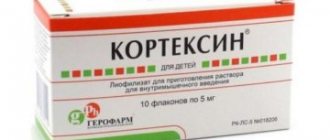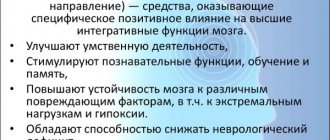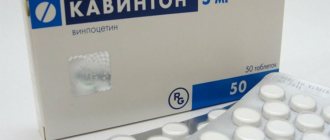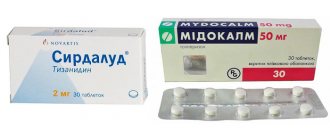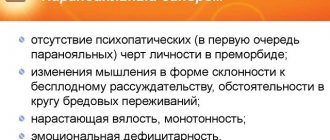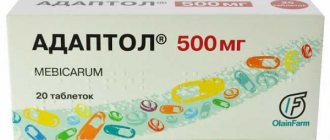What is Mexidol?
Drugs with antioxidant effects are widely used by doctors in cardiology, neurology and other branches of medicine. Medicines help the body fight the effects of free radicals and reduce the severity of their negative effects on tissues. A domestic drug, a representative of the group of antioxidants, quite often recommended by doctors is Mexidol tablets.
In both children and adults, this remedy allows you to normalize the condition of cell membranes, provide a slight nootropic and anticonvulsant effect, and increase the body’s resistance to various negative influences from the outside.
Composition of the drug
The drug Mexidol is a drug whose main active ingredient is ethylmethylhydroxypyridine succinate. It is usually a white or slightly creamy powder that dissolves easily in water.
Ethylmethylhydroxypyridine succinate suppresses free radical processes in the human body, which is why it has an antioxidant effect.
Excipients that help the drug maintain its properties or state of aggregation vary depending on the form of release. For example, tablets may contain magnesium stearate, lactose monohydrate, and the injection form will contain sodium metabisulfite.
Important! Patients often do not take into account the excipients present in the medications, which can lead to an allergic reaction if the medication is used without first consulting a doctor!
The drug is produced in two dosage forms: tablets and injections for intramuscular or intravenous administration. Highlight:
- packs of 5 ampoules with 5 ml of the drug;
- packs of 5 ampoules with 10 ml of product;
- tablets of 125 mg, produced either in blisters of 10 pieces, or in plastic jars of 90 pieces.
Several pharmaceutical companies are involved in the release of Mexidol on the domestic market: Pharmasoft, ASI-pharma, Ellara, etc. The medication is also separately produced for use in veterinary practice, but it is absolutely not suitable for people!
Mexidol is produced only in Russia and Belarus, and is not registered in all CIS countries. In Europe, the product is not used and, as a result, is not produced.
Ethylmethylhydroxypyridine succinate is a substance that performs two important tasks in the human body. Firstly, due to its effect, free radicals are deactivated, which have a damaging effect on cellular structures. Secondly, the substance protects cell membranes from too rapid destruction.
Additionally, Mexidol is able to have an antihypoxic effect on the body, which means that it helps saturate the bloodstream with oxygen. Nootropic, anti-stress and anticonvulsant effects are currently under study.
It is believed that under the influence of the medication, the ability to learn increases, memory improves, and reflexes become better. The product normalizes sleep-wake cycles and reduces the rate of degeneration of brain cells.
Maxidol has a positive effect on blood, improves its rheological properties (reduces viscosity, improves fluidity). As a result, blood begins to penetrate even those parts of the body that were previously poorly supplied with it.
The instructions for use of Mexidol state that the medicine is suitable for use in the following cases:
- the presence of neurological problems: vegetative-vascular dystonia, acute cerebrovascular accidents, cognitive problems associated with cerebral atherosclerosis (deterioration of memory, speech, loss of basic skills, etc.);
- in psychiatry: with withdrawal syndrome (alcohol or drug withdrawal), anxiety, neuroses, intoxication with drugs from the group of antipsychotics;
- in surgery for the complex treatment of acute purulent-inflammatory processes in the peritoneum.
The drug is contraindicated in the presence of individual intolerance to the main active substance or its components. It is not prescribed for liver and kidney diseases.
Among the side effects of Mexidol, as the instructions say, allergies most often appear. You should also be wary of nausea, excessive dryness of the oral mucosa, and bouts of drowsiness.
Important! The effect on a child or pregnant woman is unknown, since clinical trials have not been conducted. In this regard, the drug should be used with caution!
How to take Mexidol for each specific patient is decided by the attending physician. The doctor selects the optimal dosage, determines the method of delivering the medicine to the body depending on the severity of the patient, and gives recommendations regarding compatibility with other medications. Before prescribing the drug, it is worth taking into account concomitant diseases and individual characteristics.
General recommendations
Mexidol in tablet form is taken orally. The tablet is not chewed or divided in half. You should drink it with plenty of plain water (it is important to give preference to water rather than other drinks). Eating does not have any effect on the activity of the medication.
The injection form is used for intramuscular injections or intravenous infusions. Before giving the injection, the drug is diluted in a 0.9% sodium chloride solution. After using Mexidol, you should be careful while driving, as well as when engaging in other potentially dangerous activities. This recommendation is associated with drowsiness, which the medicine can provoke.
Mexidol and alcohol are incompatible with each other. While the patient is undergoing treatment with the drug, alcoholic beverages should be completely avoided.
When explaining how to take Mexidol, the doctor will definitely emphasize that the drug has a maximum daily dose. For example, it is strictly not recommended to drink more than 6 tablets (800 mg) in 24 hours. When administered intravenously, the maximum daily dose of the drug is 1200 mg.
| Disease | Course duration | Dosage |
| Acute cerebrovascular accident (ACVA) | Initially within 10-14 days | 200-500 mg 2 to 4 times a day, then another 14 days 200-250 mg several times a day |
| Encephalopathy | Initially within 2 weeks | View ONMK |
| Mild cognitive impairment | Course from 2 weeks to a month | 200-300 mg |
| Withdrawal syndrome | 5 to 7 days | 200-250 mg |
| Antipsychotic drug poisoning | Course in 7-14 days | 200 to 500 mg |
| Severe necrotizing pancreatitis | From 800 mg until shock subsides, then gradually reduce the dose to 200-300 mg | |
| Mild necrotizing pancreatitis | 200-300 mg per day |
The doctor may change the dosage or regimen at his own discretion. The doctor will also take into account the condition of the kidneys and liver, and the presence of concomitant therapy in a particular patient.
For children, doctors select the dosage individually. It is usually recommended to give 1-2 tablets 2-3 times a day.
The choice of the optimal number of tablets and frequency of administration depends on the child’s diagnosis.
Mexidol is not officially approved for the treatment of children and adolescents. However, the doctor can take responsibility by still prescribing the drug to the child. The question of whether Mexidol can be taken by children is still open.
Drug analogues
Like other drugs, Mexidol analogues are divided into analogues in composition and analogues in action. In the first case, the composition includes an identical compound that has exactly the same effect on the patient’s body. In the second case, the same effect is provided by different active ingredients.
The attending doctor must make a choice between an analogue of Mexidol in terms of composition or action.
Among the analogues of Mexidol in terms of action are:
- Mexidant;
- Mexicofin;
- Mexico;
- Neurox;
- Armadin et al.
Ethylmethylhydroxypyridine succinate is the main active ingredient in all these drugs. The difference is explained by manufacturers, excipients, and the quality of raw materials used. Considering these features, you should give preference to the drug that the doctor initially recommended, rather than choosing a cheaper drug, since its effect may be completely different.
Similar in effect
The following medications are analogous in effect:
- Kaviton – the main active ingredient is vinpocetine, the drug improves metabolism in brain cells, helps improve blood circulation;
- Nootropil is the basis of piracetam, belongs to the group of nootropics, stimulates brain activity;
- Glycine - with the same active ingredient in the composition is also included in the group of metabolic drugs that improve processes in the brain;
- Cytoflavin - contains succinic acid, also aimed at stimulating brain activity, improving thought processes, etc.
Only the attending physician should decide to replace Mexidol with an analogue in effect. It is not always that analogs in effect can ideally replace the drug chosen by the doctor, and therefore it is strictly not recommended to change one drug to another on your own.
Opinions about Mexidol vary greatly both in professional circles and among patients.
Doctors often note that patients taking Mexidol for indications recover faster than those who do not receive the drug in a similar case for some reason.
There is an improvement in cognitive abilities in the elderly, and faster regeneration in children who have suffered a traumatic brain injury. At the same time, there are doctors who consider the medicine to be a dummy that does not work.
At the same time, doctors refer to the lack of clinical studies and the fact that the drug is not used in most European countries and the USA.
Patients generally respond positively to the medicine. They note improved sleep while taking the drug, improved memory, and decreased fatigue.
Among the side effects, drowsiness is most often mentioned, which disappears as soon as the drug is stopped. Complaints of nausea are rare, as are complaints of allergic reactions. However, the possibility of their development should not be excluded.
The instructions for Mexidol say that it is available with a prescription. However, in most pharmacies it is possible to purchase medicine without a doctor's recommendation.
Directions for use and dosage (tablets)
Antioxidants are antioxidants that protect against free radicals.
Due to the effect they have, they are prescribed for the complex treatment of many pathological processes associated with impaired blood circulation and intoxication. Among this group, Mexidol can be distinguished. It is available both in the form of a solution in ampoules (2 and 5 ml) for injection, and in the form of tablets. For more convenient use, Mexidol is available in ampoules and tablets. Each of these forms has its own characteristics and method of application:
- Mexidol ampoules. One package usually contains 5-10 containers of solution. The ampoule can be 2, 5 and 10 ml. Mexidol injections intramuscularly should be done only in mild cases. The attending physician should tell you how much to inject the medicine, based on the patient’s condition. In severe cases, Mexidol injections are given mainly intravenously. Two types of input are used for this purpose: Dropper. In this option, the speed should be no more than 1 drop per second;
- Jet method. This type of procedure lasts about 5 minutes depending on the amount of the drug.
Before using the drug Mexidol, you need to find out what it helps with. A neurologist can tell you about this, as well as instructions for use and reviews left by people and doctors about this medication.
The drug Mexidol relaxes muscle tissue well, prevents cells from oxidizing, stimulates blood circulation and removes harmful substances from the body. Many doctors note its sedative effect and the ability to have a beneficial effect on the human autonomic system. Such results are achieved due to the main active ingredient (ethylmethylhydroxypyridine succinate), which has a positive effect on the outer membrane of cells.
The scientists who created this medicine claim that the list of things that Mexidol helps with includes its effect on hematopoiesis and the blood flow itself. This effect will be especially appreciated by people suffering from poor vascular permeability, anemia and high cholesterol levels in the blood.
A sedative effect on the nervous system helps patients who suffer from panic attacks, anxiety, depression and other mental disorders.
Mexidol injections quickly stop such manifestations. After completing the course of injections, there are no negative consequences, such as addiction.
You can inject Mexidol if you have a stroke, as it helps improve cerebral (cerebral) blood circulation and serves as a preventive measure against relapses. Among its other advantages, we can highlight its good compatibility with most well-known medications. That is why Mexidol is used in many treatment regimens as a primary or additional treatment.
Mexidol has its own indications for use, namely:
- Intoxication, which is a consequence of long-term use of antipsychotics or drinking alcohol;
- Neuroses of various types;
- Glaucoma;
- Traumatic brain injuries;
- Inflammatory processes with the release of pus in the gastrointestinal tract and abdominal organs;
- Stroke and heart attack;
- Developing cerebral ischemia;
- Epileptic seizures.
Your doctor should tell you how to take Mexidol tablets at your appointment. After all, the treatment regimen is drawn up based on the examination results. It is subsequently adjusted depending on the results obtained. Duration of use of Mexidol in table. usually does not exceed 2 months. No more than 600 mg can be used per day.
Mexidol injections are mainly given in medical institutions. They are done intravenously or intramuscularly, depending on the pathological process and the individual characteristics of the patient. The dose is selected by a neurologist after diagnosis. The patient's body weight is taken into account. The duration of the course is selected individually depending on the pathological process and usually does not exceed 1 month.
Orally, 125–250 mg 3 times a day; the maximum daily dose is 800 mg (6 tablets).
Duration of treatment - 2–6 weeks; to relieve alcohol withdrawal – 5–7 days. Treatment is stopped gradually, reducing the dose over 2-3 days.
The initial dose is 125–250 mg (1–2 tablets) 1–2 times a day with a gradual increase until a therapeutic effect is obtained; the maximum daily dose is 800 mg (6 tablets).
The duration of therapy in patients with coronary artery disease is at least 1.5–2 months. Repeated courses (on the recommendation of a doctor) are preferably carried out in the spring and autumn.
MORE ABOUT: Mexidol for osteochondrosis (cervical): does it help? How to use?
Instructions for use
General recommendations
Mexidol is a medicinal drug that is an excellent membrane protector. Used to protect cells from negative influences. This is especially true regarding the destructive effect of free radicals on cellular structures.
Mexidol is a medicinal drug that is an excellent membrane protector.
Release form
Mexidol 5 ml is produced in the form of a colorless or yellowish solution, which is intended for intravenous and intramuscular injections. The ampoules are made of light-protective glass. They have a blue or white breaking point. Available in 5 ampoules in special packaging. A pack may contain from one to two such contour packs with cells.
Compound
The active substance is ethylmethylhydroxypyridine succinate. Auxiliary components: water for injection and sodium metabisulfite.
Actively affects the cells of the body with the help of the main active substance. Enhances the activity of membrane-bound enzymes, promotes better oxygen flow to tissues, improves memory, and reduces the toxic effects of alcohol.
The drug increases the body's resistance to stress and unusual situations.
It has a positive effect on the body during atherosclerotic changes in blood vessels and platelet aggregation.
Mexidol has a positive effect on the body during atherosclerotic changes in blood vessels and platelet aggregation.
Indications
Recommended for the following pathological conditions:
- imbalance of blood circulation in brain structures;
- encephalopathy of a discirculatory nature;
- severe traumatic brain injuries and their possible consequences;
- vegetative-vascular dystonia;
- cognitive disorders developing as a result of atherosclerosis;
- sudden myocardial infarction;
- open-angle glaucoma at its different stages;
- withdrawal state in alcoholism;
- intoxication with antipsychotic drugs;
- mild necrotizing pancreatitis.
Mexidol is often used for alcohol intoxication.
During withdrawal syndrome, the drug reduces the toxic effects of ethyl alcohol.
This remedy is often used in the treatment of alcohol addiction. Both injections and Mexidol tablets can be prescribed. Prescribed in the following cases:
- ethyl alcohol poisoning;
- encephalopathy of alcoholic origin;
- memory disorders associated with alcoholism;
- alcoholic epilepsy;
- some organic diseases associated with frequent drinking;
- anxiety disorders;
- withdrawal syndrome with autonomic disorders.
Leads to a reduction in discomfort, improves microcirculation in brain structures and reduces symptoms of intoxication. At the same time, the feeling of fear and anxiety that often occurs with alcohol addiction is significantly reduced. The craving for alcohol quickly disappears.
In case of ethyl alcohol poisoning, Mexidol is prescribed.
Mexidol is considered one of the main drugs that help with hangover. The active substance has a good nootropic effect on the body.
When using the drug to treat hangover symptoms, the following reactions are observed:
- brain metabolism improves;
- the nervous system is restored after alcohol poisoning;
- the feeling of fear decreases, anxiety disappears;
- withdrawal syndrome practically disappears;
- migraine symptoms disappear;
- the harmful effects of alcohol on the body are significantly reduced;
- due to increased dopamine in the blood, mood improves;
- The drug promotes the rapid breakdown of alcohol in the blood and its removal from the body.
Mexidol is used quite often, because despite the presence of a large number of positive effects, it has practically no contraindications for use.
How to breed
In order to administer the medicine by infusion, it is diluted in a 0.9% sodium chloride solution.
How to inject Mexidol
The spray should be administered no faster than 5-7 minutes; the product should be administered drip-wise at an average of 40-50 drops per minute.
Intravenously
Mexidol 5 ml is administered intravenously 3 times a day. Diluted with isotonic sodium chloride solution. This dosage should be observed for the first 3 days of treatment. After this, every subsequent day the concentration of the drug is reduced by 1 ml.
Mexidol 5 ml is administered intravenously 3 times a day.
Intramuscularly
The medication is administered intramuscularly, 2 ml every day for 15 days in a row.
Side effects
The medicine is well accepted in most cases. Rarely, use may be accompanied by the following side effects:
- attacks of nausea;
- dry mouth;
- allergic manifestations to individual components of the drug.
Has minimal toxic effects and does not affect motor and coordination activity. It has been proven that even when taking large doses of this medication, additional side effects do not occur.
The use of Mexidol enhances the effect of benzodiazepine anxiolytics and also reduces the toxic effects of ethyl alcohol.
When treated in combination with anticonvulsants and strong antiparkinsonian drugs, the effect of the use of Carbamazepine and Levodopa is significantly enhanced.
special instructions
Taking Mexidol is prohibited:
- during pregnancy and lactation;
- up to 12 years;
- with impaired renal function;
- with liver failure;
- with individual intolerance to certain components.
People suffering from hypertension with frequent crises should take this medicine especially carefully. The medication is considered the drug of choice for low blood pressure.
Patients with bronchial asthma should take the drug under strict medical supervision, especially in cases where hypersensitivity to sulfites is determined.
During pregnancy, it is rarely prescribed, since its effect on the intrauterine development of the fetus has not yet been fully studied. In the first trimester, when the fetus is just beginning to form, the use of the drug is strictly prohibited.
This medication is used only when a woman develops late gestosis.
At the same time, pressure increases, swelling, cramps and protein in the urine appear. All this can significantly harm the child. Therefore, if the kidneys are functioning normally, a woman can be prescribed Mexidol. It is taken only in a hospital setting and under the strict supervision of an obstetrician-gynecologist.
Mexidol for children
It is not recommended for use in children under 12 years of age, since there are no reliable clinical trials on the effect of the drug.
In rare cases when emergency assistance is needed, this remedy can be used to treat children. Such situations include severe traumatic brain injuries, accompanied by circulatory disorders in the brain.
First, the substance is administered by infusion, then intramuscularly. The period of therapy is determined by the traumatologist.
The price of ampoules with Mexidol solution 5 ml ranges from 500 rubles. In most cases, the final price will depend on the number of ampoules in the package and the pharmacy markup.
It must be stored in a dark and dry place, out of reach of children. The temperature should not exceed 25°C. This medicine is dispensed strictly according to a specialist prescription. The shelf life is 3 years, starting from the date of manufacture indicated on the label.
Mexidol's analogs
Mexidol can be found under other names, including: Mexicor, Mexidant, Mexibel and Mexifin. In their chemical structure they are completely identical. The release forms and dosages are also the same.
Cerecard is an analogue of Mexidol.
But there are several other drugs with similar pharmacological effects on the body:
- Neurox - administered intramuscularly or intravenously, has an effect similar to Mexidol;
- Cerecardium is an antioxidant;
- Hypoxen - the action is aimed at stimulating tissue respiration during acute hypoxia, has a hypotensive, metabolic, antihypoxic and antioxidant effect on the body;
- Riluzole – used for amyotrophic sclerosis, indications are brain disorders;
- Vitagamma - helps replenish the necessary balanced vitamin composition, prescribed for neurological pathologies associated with vitamin deficiency;
- Emoxybel is prescribed to normalize cerebral microcirculation, reduces blood viscosity and dilates coronary vessels, and is used in the complex therapy of myocardial infarction.
Oleg, 35 years old, St. Petersburg: “The drug was prescribed due to vegetative-vascular dystonia. There was nausea, frequent dizziness, pain in the heart area. Often the disease was accompanied by attacks and reached the point of loss of consciousness. After a course of therapy with Mexidol injections, the condition improved significantly. I was also pleased with the cost of the medicine.”
Anna, 57 years old, Saratov: “I started taking Mexidol after another hypertensive crisis. He was prescribed by a neurologist. She gave injections and took medications to reduce blood pressure. The therapy showed a positive effect within a few days. I'm satisfied with the results."
Veronica, 29 years old, Moscow: “I suffer from changes in blood pressure. The doctor prescribed Mexidol, but the medicine did not work. After intravenous administration, my blood pressure rose significantly, my head began to hurt, and I had a panic attack. I won't use it anymore. I switched to another drug."
- Mexidol instructions for use of the drug (injections in ampoules)
- Trade name: Mexidol
- International Nonproprietary Name: No
- Dosage form: Solution for intravenous and intramuscular administration 50 mg/ml, 2 ml or 5 ml.
Ethylmethylhydroxypyridine succinate is a drug, according to the manufacturer, an inhibitor of free radical processes - a membrane protector. It is not used in medical practice in Western countries, but is widely used in Russia, the CIS countries, and Mongolia.
1 ml of solution contains:
- active substance: ethylmethylhydroxypyridine succinate - 50 mg;
- excipients: sodium metabisulfite, water for injection.
- Description: Transparent colorless or slightly yellowish liquid.
- Pharmacotherapeutic group: Other drugs for the treatment of diseases of the nervous system.
- ATX code: N07XX
The decision to prescribe a parenteral method of drug delivery is made by the doctor. Injections should be performed in a medical facility, subject to antiseptic rules, to prevent infection.
What is
Release form: tablets.
The active substance is ethylmethylhydroxypyridine succinate. Antioxidant. The drug is designed to stop negative reactions associated with the negative effects of free radicals. In addition to the main property:
- Has protective abilities against cell walls.
- Helps restore optimal oxygen saturation of tissues and organs.
- Restores metabolism in nerve cells.
- Prevents the occurrence of seizures.
- Gives a slight sedative effect.
- Helps remove toxins during withdrawal symptoms.
When ingested, the blood supply inside the head improves. Cholesterol decreases. The patient's general condition is stabilized. It has a beneficial effect on the activity of the central and peripheral nervous system.
Metabolism occurs in the liver. Elimination occurs up to five hours.
It is used if the patient has a history of the following pathologies:
- asthenia;
- support in case of extreme loads and stress;
- coronary heart disease, myocardial infarction (as part of complex therapy);
- eliminating the consequences of mild traumatic brain injury;
- organic damage to the gray matter of the brain;
- vegetative dystonia;
- disorders caused by problems with blood circulation inside the head, including after a stroke;
- anxiety in neurotic, neurosis-like conditions;
- temporary pathological phenomena resulting from poisoning with antipsychotics.
With a wide range of prescriptions, taking Mexidol rarely causes side effects. The main ones are considered to be mild problems with the gastrointestinal tract and allergic reactions to the component composition.
The manufacturer names the following as contraindications for use:
- Acute form of liver failure.
- Severe renal failure.
- Hypersensitivity to Mexidol.
The effect on children, pregnant and lactating women is still unknown. Therefore, no appointment is made. During exposure to a person, it is prohibited to drive vehicles and engage in those types of work that require increased attention and a high level of psychomotor reactions.
To purchase in Russian pharmacies, you must obtain a prescription from your attending physician. Not available for free sale. The average cost of a medicine is about 400 rubles. There are cheaper developments with similar composition and other criteria that completely replace the one under consideration both in quality and safety standards.
Shelf life of Mexidol® injection solution 5%
acute cerebrovascular accidents;
encephalopathy;
vegetative-vascular dystonia;
atherosclerotic disorders of brain function;
neurotic and neurosis-like disorders with anxiety;
relief of withdrawal syndrome in alcoholism with the presence in the clinical picture of neurosis-like and vegetative-vascular disorders, as well as acute intoxication with neuroleptics;
in the complex treatment of acute purulent-inflammatory processes of the abdominal cavity (acute destructive pancreatitis, peritonitis).
In a place protected from light.
Keep out of the reach of children.
2 years.
Do not use after the expiration date stated on the package.
Which analogue is better to focus on and what to choose?
The choice of drug is based on the individual health indicators of each individual patient. It is better to consult a doctor. In this case, the medicine will be selected taking into account contraindications, individual conditions of the susceptibility of the composition to minimize the risk of developing allergic and other adverse reactions to the chosen regimen. In addition, comorbid disorders accompanied by the main diagnosis are taken into account.
Tenoten or Nootropil will be chosen for the child. To get rid of alcohol addiction and relieve symptoms of poisoning with psychotropic drugs, Mexidol and others like it will be selected as part of a comprehensive recovery.
Synonyms of nosological groups
| Category ICD-10 | Synonyms of diseases according to ICD-10 |
| F10.3 Withdrawal state | Alcohol withdrawal syndrome |
| Withdrawal syndrome | |
| Withdrawal syndrome in alcoholism | |
| Abstinence | |
| Alcohol withdrawal | |
| Alcohol withdrawal | |
| Alcohol withdrawal state | |
| Alcohol withdrawal syndrome | |
| Post-withdrawal disorder | |
| Post-withdrawal state | |
| Hangover syndrome | |
| Withdrawal syndrome | |
| Alcohol withdrawal syndrome | |
| Alcohol withdrawal syndrome | |
| Withdrawal state | |
| F41.9 Anxiety disorder, unspecified | Severe anxiety |
| Neurosis-like symptoms | |
| Neurosis-like disorders | |
| Neurosis-like conditions | |
| Neuroses with anxiety symptoms | |
| Neuroses with anxiety | |
| Neurotic disorders with anxiety syndrome | |
| Acute situational and stress anxiety | |
| Acute situational stress anxiety | |
| Acute anxiety attack | |
| Depressed mood with elements of anxiety | |
| Psychopathy with a predominance of anxiety and restlessness | |
| Sharp anxiety | |
| Situational anxiety disorder | |
| Alarm state | |
| Susto | |
| Anxious delusional state | |
| Anxious delusional component | |
| Anxious state | |
| Anxiety | |
| Anxiety neuroses | |
| Anxiety disorders | |
| Anxiety disorders in neurotic and neurosis-like conditions | |
| Anxiety states | |
| Anxiety syndrome | |
| Chronic neurotic anxiety | |
| Sense of anxiety | |
| F48 Other neurotic disorders | Neurosis |
| Neurological diseases | |
| Neurotic disorders | |
| Neurotic state | |
| Psychoneurosis | |
| Anxiety-neurotic conditions | |
| Chronic neurotic disorders | |
| Emotional reactive disorders | |
| G90 Disorders of the autonomic nervous system | Angiodystonia |
| Vasovegetative manifestations | |
| Vasomotor dystonia | |
| Autonomic dystonia | |
| Autonomic dysfunction | |
| Vegetative lability | |
| Autonomic-vascular disorders | |
| Autonomic disorders | |
| Vegetative-vascular dystonia | |
| Vegetative-vascular disorders | |
| Vegetovascular dystonia | |
| Vegetovascular disorders | |
| Vegetative-vascular dystonia | |
| Neurocirculatory dystonia | |
| Neurovegetative disorders | |
| Cardiopsychoneurosis | |
| Neurocirculatory dystonia of the hypertensive type | |
| Primary neurovegetative syndrome | |
| Autonomic dystonia syndrome | |
| G93.4 Encephalopathy, unspecified | Atherosclerotic encephalopathy |
| Bilirubin encephalopathy | |
| Hypertensive encephalopathy | |
| Hypoxic encephalopathy | |
| Dysmetabolic encephalopathy | |
| Encephalopathy | |
| Lacunar status | |
| Latent hepatic encephalopathy | |
| Subacute spongiform encephalopathy | |
| Brain damage | |
| Portocaval encephalopathy | |
| Hemorrhagic shock and encephalopathy syndrome | |
| Vascular encephalopathy | |
| Traumatic encephalopathy | |
| Tremor in portal systemic encephalopathy | |
| Encephalopathies | |
| Encephalopathy | |
| Encephalopathy of secondary origin | |
| Discirculatory encephalopathy | |
| Portocaval encephalopathy | |
| Epileptic encephalopathy | |
| I67.2 Cerebral atherosclerosis | Atherosclerosis of the cerebral arteries |
| Atherosclerosis of cerebral vessels | |
| Atherosclerotic changes in cerebral vessels | |
| Sclerosis of cerebral vessels | |
| Sclerotic disorders of cerebral circulation | |
| Vascular diseases of the brain | |
| I67.9 Cerebrovascular disease, unspecified | Angioneuropathy |
| Arterial angiopathy | |
| Brain hypoxia | |
| Encephalopathy | |
| Diseases of the brain of a vascular and age-related nature | |
| Coma due to cerebrovascular accident | |
| Lacunar status | |
| Metabolic and vascular disorders of the brain | |
| Impaired blood supply to the brain | |
| Cerebrovascular accident | |
| Brain dysfunction | |
| Dysfunction of the cerebral cortex | |
| Cerebral circulation disorders | |
| Cerebrovascular insufficiency | |
| Acute cerebrovascular insufficiency | |
| Acute cerebrovascular accident | |
| Damage to cerebral vessels | |
| Progression of destructive changes in the brain | |
| Cerebrovascular disorders | |
| Cerebral insufficiency syndrome | |
| Cerebrovascular insufficiency | |
| Vascular encephalopathy | |
| Vascular diseases of the brain | |
| Vascular disorders of the brain | |
| Vascular lesions of the brain | |
| Functional brain disorders | |
| Chronic cerebral ischemia | |
| Chronic circulatory failure | |
| Chronic cerebrovascular insufficiency | |
| Chronic cerebrovascular insufficiency | |
| Chronic disorder of blood supply to the brain | |
| Cerebral insufficiency | |
| Cerebral organic failure | |
| Cerebrostenia | |
| Cerebrovascular pathology | |
| Cerebroasthenic syndrome | |
| Cerebrovascular disease | |
| Cerebrovascular disease | |
| Cerebrovascular disorder | |
| Cerebrovascular disorder | |
| Discirculatory encephalopathy | |
| K65.0 Acute peritonitis | Abdominal abscess |
| Abdominal abscess | |
| Abscess intraperitoneal | |
| Abdominal abscess | |
| Subphrenic abscess | |
| Intraperitoneal abscesses | |
| Intraperitoneal abscess | |
| Intra-abdominal abscess | |
| Acute purulent-inflammatory process of the abdominal cavity | |
| Acute diffuse peritonitis | |
| Subphrenic abscess | |
| K85 Acute pancreatitis | Acute necrotizing pancreatitis |
| Acute pancreatitis | |
| Pancreatitis | |
| Hemorrhagic pancreatitis | |
| Acute pancreatitis | |
| Edematous pancreatitis | |
| Pancreatogenic sepsis | |
| T43.3 Poisoning with antipsychotic and antipsychotic drugs | Correction of side effects of neuroleptics |
| Correction of side effects of neuroleptics | |
| Neuroleptic extrapyramidal syndrome | |
| Acute intoxication with antipsychotic drugs | |
| Side effects of neuroleptics | |
| Condition after acute intoxication with antipsychotic drugs | |
| Extrapyramidal neuroleptic syndrome |
Action of Mexidol
The drug is available in the form of tablets and solution for intramuscular and intravenous administration. Consists of ethylmethylhydroxypyridine succinate - 1 ml, additional components in the form of sodium metabisulfite - 0.7 mg, water - up to 1 ml.
The drug increases the body's susceptibility to stressful situations, has antihypoxic, membrane-protective, nootropic, and anticonvulsant effects.
The medicine improves metabolism and blood supply to the meninges, reduces platelet aggregation, reduces cholesterol in the blood, and intoxication processes in acute pancreatitis. It is determined in blood plasma 4-5 hours after administration and is excreted from the body mainly in urine.
Indications for use:
- Problems with blood circulation in the brain in acute form.
- Traumatic brain injuries and their complications.
- Encephalopathy of discirculatory type.
- Manifestations of vegetative-vascular dystonia.
- Increased intraocular pressure as part of complex treatment.
- With myocardial infarction.
- Anxiety and anxiety during the development of neuroses and conditions similar to them.
- Treatment of intoxication in case of poisoning with alcohol and psychotropic substances.
- Atherosclerotic manifestations.
- Inflammatory diseases in the abdominal cavity with a purulent course, such as peritonitis, inflammation of the pancreas (as part of complex therapy).
Side effects:
- nausea turning into vomiting;
- feeling of dry mouth;
- drowsiness;
- manifestation of an allergic reaction.
Contraindications to the use of the drug:
- liver and kidney damage in severe forms;
- individual intolerance to the components of the drug;
- age under 18 years;
- periods of pregnancy and breastfeeding.
Indications for the use of Mexiprim are problems with blood circulation in the brain in an acute form.
Treatment regimens
The dosage is selected for the specific disease and method of drug administration. The doctor must explain to the patient how and when to take the medicine. The duration of the course of therapy depends on the indications and condition of the patient. If Mexidol is used in the form of tablets or capsules, the maximum daily dose is 800 mg. Injection of the drug increases the maximum daily dose to 1200 mg.
Mexidol in ampoules
Intravenous injections require jet or drip administration of the drug for 5-7 minutes. The medicine is diluted in saline solution.
- Impaired cerebral blood supply: daily injections of the drug for two weeks.
- Restoring blood flow in the central nervous system after chronic ischemia: intramuscular injections twice a day for two weeks.
- Stroke. At the first stage, intravenous injections of 500 mg twice a day. Next, intramuscular injections with a decreasing dosage over two weeks.
- Consequences of traumatic brain injury: injections of 200-500 mg three times a day. The course of therapy varies from ten days to two weeks.
- Cognitive disorders while taking ethyl alcohol: injection of the drug twice a day for a week.
- Acute inflammation of the pancreas: intravenous or intramuscular administration of 200-500 mg 3 times a day.
- Antipsychotic poisoning: injection of the drug twice a day for a week.
During treatment, the doctor must monitor the patient's condition and, if necessary, change the dosage of the drug.
Directions for use and dosage (tablets)
Indications for the use of Mexidol injections (intravenously or intramuscularly):
- acute circulatory disorders in the brain;
- traumatic brain injuries (injections of the drug are also prescribed to relieve or reduce the severity of the consequences of traumatic brain injuries);
- slowly progressive insufficiency of cerebral blood supply (dyscirculatory encephalopathy);
- neurocirculatory (vegetative-vascular) dystonia syndrome;
- mild forms of cognitive dysfunction of atherosclerotic origin;
- anxiety disorders that accompany neurotic and neurosis-like (pseudo-neurotic) conditions;
- acute myocardial infarction (the drug is prescribed from the first days in the form of droppers or intramuscular injections as part of a complex of therapeutic measures);
- open-angle glaucoma of the primary type (Mexidol in ampoules is intended for the treatment of the disease at various stages, complex therapy is considered the most effective);
- alcohol withdrawal syndrome, characterized by a predominance of pseudoneurotic and vegetative-vascular disorders;
- symptoms of intoxication of the body with antipsychotic drugs;
- purulent-inflammatory processes occurring in an acute form in the abdominal cavity (including necrotizing pancreatitis or peritonitis; the drug is prescribed as part of a complex of therapeutic measures).
Indications for the use of Mexidol tablets:
- consequences of acute circulatory disorders in the brain, including the consequences of TIA (transient ischemic attack), as well as as a prophylactic agent at the stage of decompensation of diseases caused by cerebral circulatory disorders;
- minor traumatic brain injuries and their consequences;
- non-inflammatory brain diseases (encephalopathies) of various origins (for example, dyscirculatory or post-traumatic);
- anxiety disorders that accompany neurotic and pseudoneurotic conditions;
- ischemic disease (as part of a complex of therapeutic measures);
- alcohol withdrawal syndrome, manifested mainly in the form of pseudoneurotic, vegetative-vascular and post-abstinence disorders;
- symptoms of antipsychotic drug poisoning;
- asthenic syndrome.
Also, an indication for the use of the drug in tablet form is the presence of a sympomocomplex in the patient, caused by the impact of stress factors on the body.
In addition, for preventive purposes, Mexidol is indicated for patients who have a high risk of developing somatic diseases due to exposure to extreme factors and stress.
The mechanism of action of Mexidol is determined by its antihypoxic, antioxidant and membrane protective properties. Therefore, to the questions “What are Mexidol tablets for?” and “When is Mexidol solution effective?”, experts answer that prescribing the drug is considered the most appropriate and successful for:
- traumatic brain injuries;
- epilepsy;
- convulsions;
- phobias and neuroses;
- VSD;
- sclerosis;
- encephalopathies of various etiologies, etc.
The drug in the form of an injection solution is intended for administration intramuscularly or into a vein (by jet or drip infusion). If Mexidol is prescribed for intravenous administration, the contents of the ampoule should be diluted in an isotonic sodium chloride solution.
A jet infusion involves administering a solution over five to seven minutes; the drug is administered by drip at a rate of forty to sixty drops per minute. In this case, the maximum permissible dose should not exceed 1200 mg per day.
Before injecting intramuscularly or administering the drug intravenously, you should read the instructions. The optimal dosage of Mexidol in ampoules is selected individually in each specific case, depending on the patient’s diagnosis and the nature of the course of his disease.
Acute cerebral circulatory disorders: from 200 to 500 mg by drip into a vein two to four times a day for 10-14 days.
Next, the drug should be administered intramuscularly. As indicated in the instructions, this method of treatment is the most effective. The solution is administered intramuscularly for two weeks, two or once a day, at a dose of 200 to 250 mg.
Elimination of the consequences of traumatic brain injuries: the drug is administered by drip in a dose of 200 to 500 mg. The frequency of administrations is from 2 to 4, the duration of treatment is from 10 to 15 days.
Slowly progressive insufficiency of cerebral blood supply at the stage of decompensation: the drug is administered by drop or jet method once or twice a day for two weeks.
The dose is selected individually and varies from 200 to 500 mg. Further treatment involves the appointment of intramuscular injections: over the next 14 days, the patient is administered from 100 to 250 mg of Mexidol per day.
As a prophylactic against dyscirculatory encephalopathy: the drug is prescribed for injection into the muscle, the daily dose is from 400 to 500 mg, the frequency of administration is 2, the duration of the therapeutic course is two weeks.
Mild cognitive impairment in elderly patients and anxiety disorders: the solution is injected into the muscle, the daily dose varies from 100 to 300 mg, the duration of the therapeutic course is from two weeks to one month.
Acute myocardial infarction (in combination with other therapeutic measures): the medicine is injected into a muscle or vein over two weeks in combination with traditional measures taken to treat patients with myocardial infarction.
MORE ABOUT: Propolis for type 2 diabetes mellitus
In the first five days of the therapeutic course, it is recommended to administer the drug intravenously by drip infusion, then you can switch to intramuscular injections (injections continue to be given for nine days).
When administered by infusion, Mexidol is diluted in an isotonic solution of sodium chloride or in a 5% glucose solution. The recommended volume is from 100 to 150 ml, the infusion time can vary from half an hour to an hour and a half.
In cases where this is necessary, the solution can be administered by drip (the duration of the infusion should be at least five minutes).
Both intravenously and intramuscularly, the drug should be administered three times a day with an interval of eight hours. The optimal dose is from 6 to 9 mg per day per kilogram of the patient’s body weight. Accordingly, a single dose is 2 or 3 mg per kilogram of body weight.
In this case, the maximum permissible daily dose should not exceed 800 mg, and a single dose should not exceed 250 mg.
Open-angle glaucoma (for various stages of the disease in combination with other therapeutic measures): the drug is administered intramuscularly for two weeks, the daily dose varies from 100 to 300 mg, the frequency of injections is from 1 to 3 during the day.
Alcohol withdrawal: method of administration - drip infusion or intramuscular injections, daily dose varies from 200 to 500 mg, frequency of injections - 2 or 3 per day. The duration of the therapeutic course is from 5 to 7 days.
Intoxication with antipsychotic drugs: route of administration - intravenously, daily dose - from 200 to 500 mg, duration of the therapeutic course - from one to two weeks.
Acute purulent inflammatory processes of the abdominal cavity: the drug is indicated for use both on the first day before surgery and on the first day after the operation. Method of administration: intravenous drip and intramuscular injection.
The dose is selected depending on the severity and form of the disease, the extent of the lesion, and the characteristics of the clinical picture. It varies from 300 (for mild necrotizing pancreatitis) to 800 mg (for extremely severe disease) per day.
Discontinuation of the drug should be carried out gradually and only after achieving a stable positive clinical and laboratory effect.
Mexidol tablets are intended for oral administration. The daily dose varies from 375 to 750 mg, the frequency of doses is 3 (one or two tablets three times a day). The maximum permissible dose is 800 mg per day, which corresponds to 6 tablets.
The duration of treatment depends on the disease and the patient’s body’s response to the prescribed treatment. As a rule, it ranges from two weeks to one and a half months. In cases where the drug is prescribed to relieve symptoms of alcohol withdrawal, the duration of the course is from five to seven days.
In this case, abrupt discontinuation of the drug is unacceptable: treatment is stopped gradually, reducing the dose over two to three days.
At the beginning of the course, the patient is prescribed to take one or two tablets per dose, once or twice a day. The dose is gradually increased until a positive clinical effect is obtained (it should not exceed 6 tablets per day).
The duration of the therapeutic course in patients diagnosed with ischemic disease is from one and a half to two months. If necessary, a second course may be prescribed as prescribed by a doctor. The optimal time to prescribe a repeat course is autumn and spring.
Mexidol is administered intramuscularly or intravenously (stream or drip). To prepare a solution for infusion, the drug should be diluted in 0.9% sodium chloride solution.
Mexidol is administered in a stream slowly over 5-7 minutes, drip-wise at a rate of 40-60 drops/min. The maximum daily dose should not exceed 1200 mg.
For acute cerebrovascular accidents, Mexidol is used in the first 10-14 days intravenously at a dose of 200-500 mg 2-4 times a day, then intramuscularly at a dose of 200-250 mg 2-3 times a day for 2 weeks.
For traumatic brain injury and the consequences of traumatic brain injury, Mexidol is used for 10-15 days intravenously at a dose of 200-500 mg 2-4 times a day.
For dyscirculatory encephalopathy in the decompensation phase, Mexidol is used intravenously in a stream or drip at a dose of 200-500 mg 1-2 times a day for 14 days, then intramuscularly at 100-250 mg/day for the next 2 weeks.
MORE ABOUT: Vijaysar tea for diabetes reviews
For course prevention of dyscirculatory encephalopathy, Mexidol is administered intramuscularly at a dose of 200-250 mg 2 times a day for 10-14 days.
For mild cognitive impairment in elderly patients and anxiety disorders, Mexidol is administered intramuscularly at a dose of 100-300 mg/day for 14-30 days.
Reviews and prices
Most doctors speak positively about the medicine. Neurologists note that the use of Mexidol as part of complex therapy for various pathologies helps alleviate the condition of patients and reduces the duration of the rehabilitation period. Some doctors choose not to use this remedy due to a lack of research demonstrating the effectiveness of ethylmethylhydroxypyridine.
Patient reviews of the drug vary. People suffering from alcohol addiction note the effectiveness of the drug for withdrawal symptoms and neurosis. Patients with vegetative dystonia respond positively to the anxiolytic effect of the medication.
The price of the medicine varies. The average price for a package of 125 mg tablets (50 pieces) is 400 rubles. The average price for a package of 2 ml ampoules (10 pieces) is 450 rubles.
Despite its availability, it is not recommended to buy the drug and use it without indications!
The price of the drug varies. For example, a package of 50 tablets costs about 500 rubles. The price for 5 ampoules of 5 ml can range from 1500-1800 rubles.
Release form and composition
Mexidol is available in the following dosage forms:
- Film-coated tablets: round, biconvex, pure white or cream-colored (10 pieces in blister packs, 3 or 5 packs in a cardboard box);
- Solution for injection: transparent, colorless or with a slight yellowish tint (2 ml in glass ampoules, 5 ampoules in blister packs, 2, 4, 10 or 20 packs in a cardboard pack; 5 ml in glass ampoules, 5 ampoules in blister packs, in a cardboard pack 1, 4, 10 or 20 packs).
The active ingredient is ethylmethylhydroxypyridine succinate. Its content:
- 1 tablet – 125 mg;
- 1 ml of solution – 50 mg.
Auxiliary components of the tablets: magnesium stearate, sodium carboxymethylcellulose and lactose monohydrate.
Composition of the tablet coating: opadry II white (polyvinyl alcohol, titanium dioxide, talc and macrogol).
Auxiliary components of the solution: sodium metabisulfite and injection water.
Reviews from doctors
Mexiprim and Mexidol do their job well, which is due to their high-quality composition. I recommend it to patients suffering from multiple sclerosis and cervical osteochondrosis. It is still worth noting that Mexiprim is more accessible.
Ekaterina Vitalievna, neurologist, Voronezh
Mexidol is widely known, but Mexiprim is better. It has a completely similar effect, but is cheaper.
Albina Nikolaevna, neurologist, Barnaul
Contraindications
In the medical community, and among patients, it is believed that the drug Mexidol is a completely safe drug. This is almost true, however, there are two contraindications related to its metabolism: liver and kidney failure. The presence of this pathology, especially severe, is the reason for choosing a different drug. Also, due to insufficient data, Mexidol is contraindicated during pregnancy and childhood. Also, the drug should be discontinued if there is an individual intolerance to the components.

